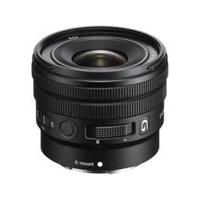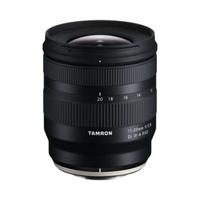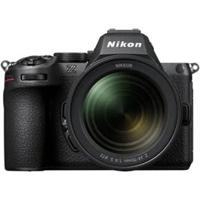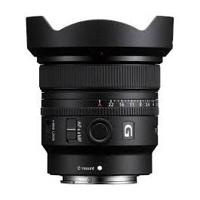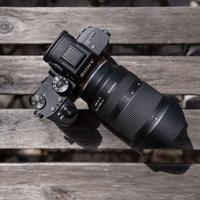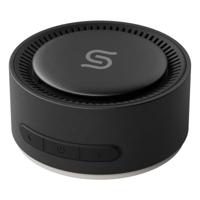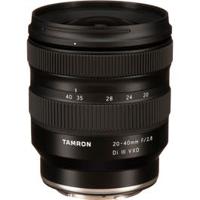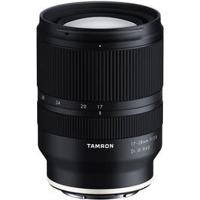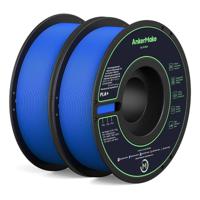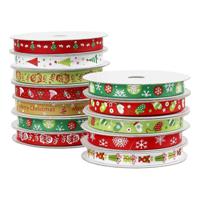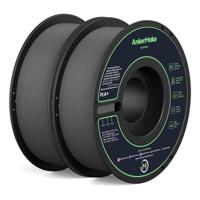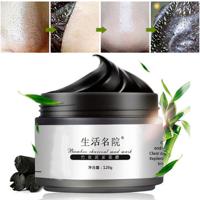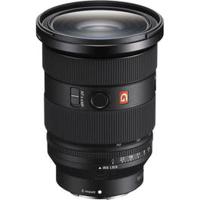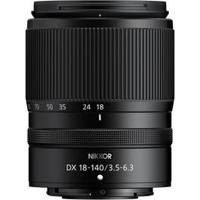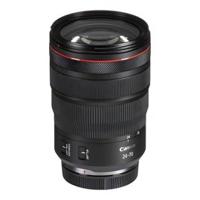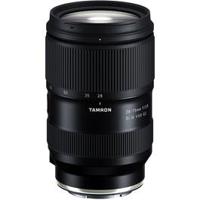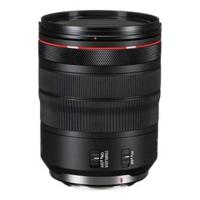22.70
11.50About Camera Lenses
Have you always been a fan of casual photography with your compact camera? Well, it is time that you upgrade the quality of those events and activities you capture. In fact, even before concerning yourself with the new technology, know that your first equipment choice when graduating from a compact to a DSLR is the camera lenses .
It is surprising that with as modern as our electronics technology is today, how old photography is. Nowhere is this more obvious than the history of the camera lenses. The lenses have been around for hundreds of years. However, the camera itself came in much later. The very first experiment with lenses is ancient. It is often attributed to an Arabian scientist named Abu Ali Hasan. These experiments led to more experiments with optics in the 1500s. However, the very first camera lens, as we know it today, was invented by Charles Chevalier in 1839. He was also the maker of the first camera. From 1839 till this date, the camera lenses steadily grew more complex. But the development that brought us lenses as we know it today was World War II. The Japanese then took over the development of camera lenses.
A guide to decoding the camera lenses jargon
Now that you know their history let’s get you to the actual crux of the camera lenses. As with most products, many DLSR enthusiasts often make a common mistake. You are quite often mesmerised by the features and capabilities of the camera. Therefore, you tend to pay less heed to choose the right camera lenses. You may be a photography student or an aspiring professional photographer. Either way, you are bound to capture different scenes and activities. And each of them requires a slightly different choice of camera lenses to obtain the best photos. The purpose of this article is to teach you the “language” of digital camera lenses. So be patient and read on.
Understanding the camera lens terminology
Most camera lenses today are named in a relatively standard way. For example, they are named as Brand name, lens type, the focal length in mm. And then the maximum aperture, other lens features and abbreviations. However, the most important terms are the maximum aperture and focal length. In other words, the “f/number” and “mm” terms. These terminologies are closely related to the types of pictures you take. Also, the abbreviations still matter, as they denote the extra features offered by each lens. For example, the VR term used in canon camera lenses stands for “vibration reduction”. This feature in the camera stabilises the lens for handheld shooting. Each company labels its lenses differently, with potentially dozens of various abbreviations.
The anatomy of camera lenses
Each part of the camera lens play a different role and serves a different purpose. One of the essential elements of the camera lens is the filter head. It lets you attach lens filters that in turn help in modifying light that reaches your camera sensor. There is a front element that collects light and bends it to the other lens elements. Furthermore, you’ll find a lens hood thread. It allows you to attach lens hoods and reduces flare while taking photos. Moreover, there are zoom and focus rings that help you zoom in and out and change the focus manually. Interestingly, the focus ring stays still when the camera is on auto-focus mode. Well, there is also an A/M mode switch. This helps you switch between auto and manual mode. However, not all lenses have all these features. Some have more than this.
Important features of camera lenses for beginners
When buying camera lenses, you do not look at the image quality first. Instead, there are other factors that matter more. The first among them is the size and weight. Of course, finding a lightweight camera can be a little deceptive. As the image quality depends on the zoom and maximum aperture, which decides the weight of the lenses. But remember that, if one heavy lens replaces three moderately heavy ones in your kit, the zoom isn’t heavy at all. But, if one goes with the lighter weight camera system, they have still got the advantage. On top of that is the auto-focus. Not all lenses have auto-focus. But if you are a sports photographer, the chances are that you need to pay for top-notch auto-focus performance. Moreover, a big one is the durability of the camera lenses along with its overall ergonomics.
The camera lenses types
Their focal length normally categorises the lenses. The kind of focal length you choose entirely depends on your subject and personal style. There’s not a clear definition of what is an ultra-wide lens. But mostly any lens shorter than 24 mm fits into this category. You need to use them carefully, as they quickly introduce significant distortion. The wide-angle camera lens fits a lot of surrounding elements in a single frame. But these lenses come with a focal length of 35 mm or less on a full-frame camera. Moreover, there are regular lenses that closely replicate what your eyes see. Camera lenses for mobile usually are such. Furthermore, any camera lens longer than 70mm is considered a telephoto lens. Also, macro lenses are made to photograph small objects while zoom lenses magnify your object while taking a photo.
Tips on how to buy Camera Lenses online
Of course, with so much lens jargon, purchasing camera lenses can be overwhelming. However, a little research and diligence will help you decode this “language”. Furthermore, this will help you buy camera lenses online in Dubai without any hassle. In addition to the right features, consider the camera lenses’ price, size and weight. This will help you get the best camera lenses out there. Below we offer some quick tips for helping you choose the best option and save a small fortune.
- Understand the technical terms of – The camera lenses for beginners can be a foreign language. Therefore, before you head to buy one always understand the various abbreviations and terminologies used in camera lenses. Check for image stabilisation, aperture, focal lengths, and zoom capabilities.
- Confirm compatibility – Always, try to match your lens to your camera manufacturer’s brands. Buying a lens from the same manufacturer saves you the hassle of getting an adapter. Also, if you are more interested in purchasing vintage lenses, then you must get yourself an adapter.
- Check the size and weight – Camera lenses with larger focal lengths and apertures are usually heavier and bigger. Therefore, check for the size and weight of the lenses before you buy them. Unless you are a professional photographer, always try and stick to lightweight camera lenses.
- Look for something in your price range – While purchasing your lenses online, have a rough idea of how much you want to spend while shopping for them. As camera lenses with more features tend to be pricier. Fortunately, you have economically cheap camera lenses that function just the way pricier ones do.
- Read reviews before you make a purchase – Reviews are your saviour when purchasing any product online. Read a handful of them before making a camera lens purchase. This will help you watch out for severe problems with camera lenses.
Remember this smart lens buying strategy: determine the kind of photography you will be shooting. Then choose a lens to match your genre. Finally, choose the camera with which that lens is compatible. It is also important to remember that the lenses have more life span than the camera themselves. Moreover, the models keep updating and changing faster than the lenses. That is all the more a reason to choose your lens first. And remember to be a little lenient on the price. A few extra bucks can get you the best quality.
Question & Answer
Why are camera lenses so expensive?
At first, the price difference between some camera lenses seems crazy. Why is that a lens with a 50 mm lens only $100 while some other is $1500? Well, lenses are high-precision pieces. Therefore, there are several factors and features that make them expensive and less expensive. Quality of materials, prime vs zoom, and aperture are a few essential factors. These influence the price differences between the professional and standard cameras. Others that decide the cost of the lenses include autofocus motor, image stabilisation, size and weatherproofing.
Are camera lenses universal?
No! Generally, most manufacturers use their lens mounts. Therefore, when you are buying a DSLR, you are not just buying a camera but a whole system. The most common families of lens mounts for DSLR are the Nikon F-mount and the Canon EF lens mount. Both Nikon and Canon make broad families of lenses for their respective cameras. However, a few third-party brands like Sigma and Tamron, make lenses that are compatible with one another. In some cases, you can also use adapters. You can use them to mount a lens of one type on a different kind of camera.
Which camera lenses are the best?
Great photography is indeed much more than just stocking on the camera gears. But then it is the perfect lens that helps the photographers achieve their vision. If you plan to click architecture and detail-heavy vistas, then the camera lenses from Sigma are great. For versatile, affordable and premium lens quality get yourself the Nikon and Canon prime lenses. If you are on a budget and require ultra-sharp images go for the Tamron auto-focus lens. There are many more such camera lenses. But, always buy them as per your requirement.
Where to buy camera lenses?
Want to improve the physical quality of your images? Well, then the best way to do that is to replace your camera lens. However, buying them is a real challenge. Well, not anymore, though! Check out Shops.ae. It features some of the best camera lenses from top brands like Nikon, Sony, Zeiss, Leica, Lumix, Olympus, Pentax, and Mamiya. You can shop these and more camera lenses for sale from online stores the world trust, and many more only on our product search engine .


